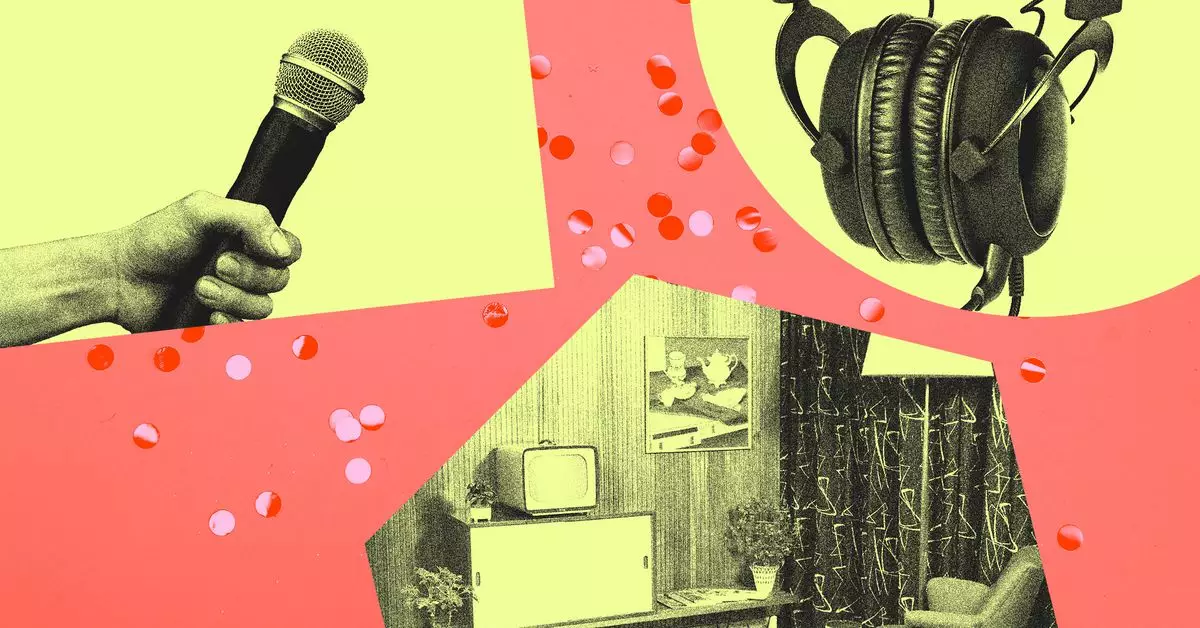The podcasting industry has undergone a significant transformation in recent years, particularly as we head into 2024. Historically an audio-only medium, podcasts have increasingly integrated video components, emerging as a video-first format. With platforms such as Spotify investing in video podcasting and established media organizations like The New York Times and NPR expanding their formats, the landscape is rapidly changing. This article delves into the current trends dominating the video podcasting space and offers insights into what the future may hold.
One notable trend is the evolution of podcast studio aesthetics. Gone are the days when podcasts were produced in minimalist or sterile environments. Instead, many modern studios resemble inviting living rooms, complete with couches, bookshelves, and decorative items such as lamps and faux plants. This cozy setting encourages a relaxed atmosphere conducive to long-form discussions, making it easier for hosts and guests to engage in meaningful conversations.
The shift towards comfort is evident in the abandonment of traditional round tables in favor of lounging setups. The prevailing design philosophy emphasizes leisure, as producers recognize the importance of creating an environment where discussions can flow naturally. This approach aligns with the preferences of younger audiences who gravitate towards more relatable and authentic content.
While aesthetics play a crucial role, sound quality remains a priority. A trend that has emerged is the use of wooden slats in studio designs, which aids in sound absorption while maintaining a homey feel. This trend not only enhances audio quality but also provides a visually appealing backdrop for video content. Wide camera shots that capture the ambiance of the studio are becoming standard—a technique that showcases not just the hosts but also the surrounding environment, contributing to the overall experience for viewers.
Furthermore, colorful lighting and neon signage have found their way into many podcast studios. These features add an engaging visual element, drawing in audiences who consume content on platforms like TikTok and Instagram. However, this focus on branding can sometimes lead to awkward visual configurations, particularly when studio elements obstruct viewers’ views of hosts or guests.
As video podcasts gain traction, the way we utilize microphones is also changing. Many producers have opted for traditional boom stands, often resulting in awkward placements that can distract from the conversation. On the other hand, there is a growing trend of allowing hosts and guests to hold their microphones, fostering a more intimate atmosphere. This approach, particularly favored by stand-up comedians, conveys an authentic image but can lead to complications, especially with guests unfamiliar with proper microphone technique.
Moreover, technical considerations are paramount. High-quality microphones such as the Shure SM7B continue to dominate the space, paired with attempts to incorporate branding elements such as logo flags. Yet, the visual clutter created by large headphones and bulky microphones can detract from the overall viewer experience, particularly in video formats.
Looking ahead to 2025, it is likely that the podcasting landscape will continue to evolve. Producers focused on gaining traction in the video space may begin to question traditional practices such as the extensive use of cumbersome equipment. The adoption of smaller lavalier microphones, in-ear monitors, and more streamlined productions could redefine video podcasts, leading to a more polished presentation.
Additionally, as production tools become more accessible, the traditional studio environment may give way to more diverse locations. Imagine podcasts being filmed in vibrant settings such as cafes, parks, or community events. The integration of artificial intelligence tools for post-production could further simplify the process, mitigating challenges associated with less-than-ideal audio capture in uncontrolled environments.
As the boundaries between podcasts and traditional television blur, audiences may begin to refer to these formats simply as “shows,” reflecting their broader entertainment value rather than being confined to the podcasting label. This shift could catalyze new opportunities for syndication on platforms like Roku, Pluto, or Tubi, thereby expanding the reach of these digital creators.
The transition toward video-first podcasting is indicative of a broader evolution within the media landscape. As producers experiment with new formats and styles, optimizing for viewer engagement becomes paramount. The future might hold surprises, including a cyclical return to audio-only formats if budgets and audience preferences shift again. Nevertheless, for now, video podcasts appear set to capture the attention of an ever-expanding audience eager for innovative, entertaining, and visually compelling content.


Leave a Reply